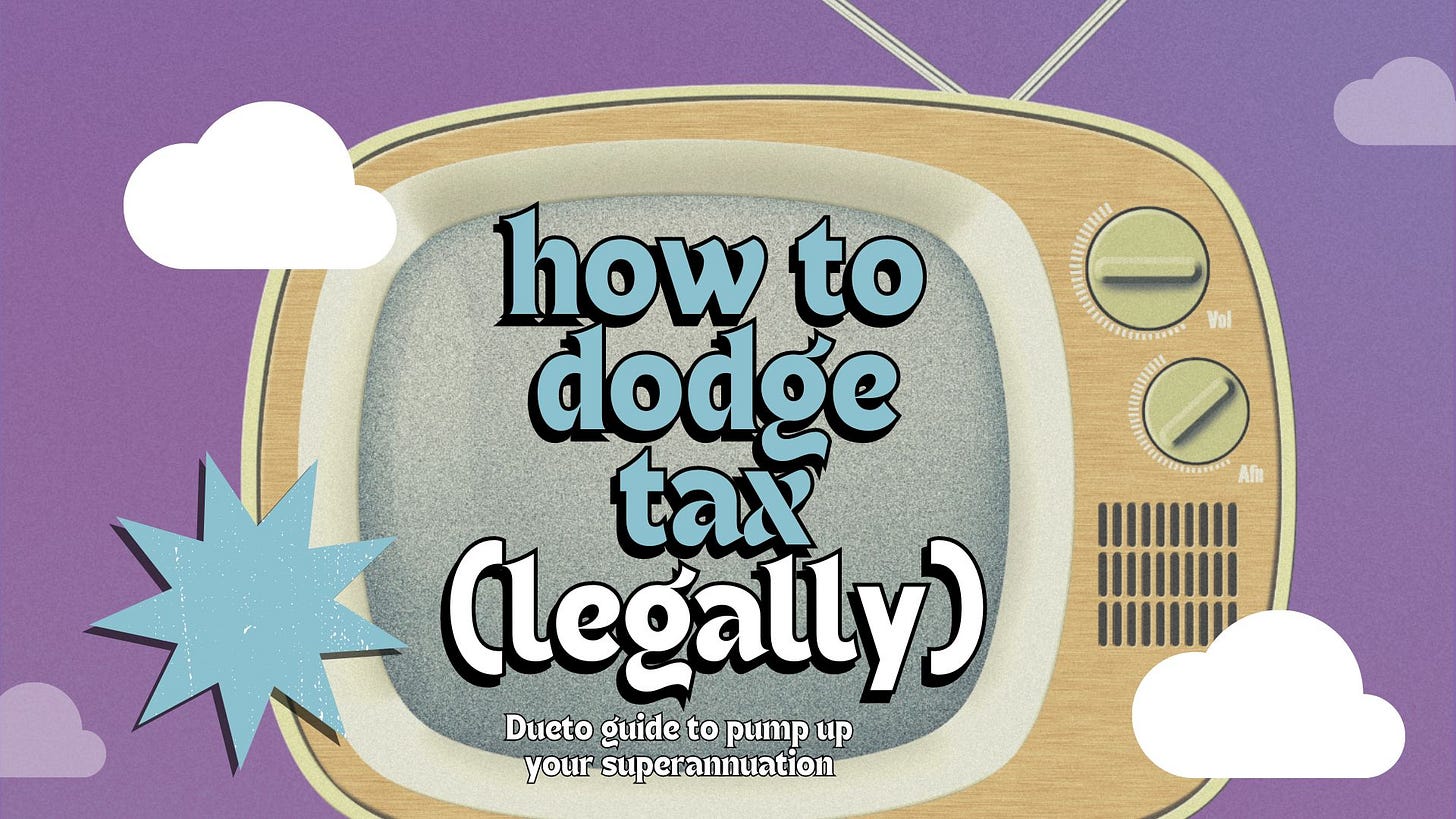5 ways to make your superannuation a tax dodge (and behave like a rich person even if you aren't)
Here's why your super is a legit (and legal) tax shelter
Most of us think trust accounts and safe deposit boxes in the Bahamas are for wealthy tax dodgers. And they are.
But for everyday Australians, superannuation is ALSO a tax shelter.
If you’re a regular wage earner, it’s one of the best tax breaks you’ll get.
And Aussies pay a tonne in income tax because it’s one of the easiest ways to reap money from a populace.
Here’s how you can grow your super stash while reaping even more tax benefits.
1. Salary sacrifice
We all know employers pay a percentage of your wage into superannuation under Australian laws.
But might your employer pay some of your salary into your super as something called ‘salary sacrifice’?
This salary sacrifice is taken from pre-tax income - also called ‘concessional super contributions’ - which means it comes from your before-tax pay (sometimes called your gross pay).
This means it’ll be taxed at a light 15%.
Now there is a catch, and that is that you can’t put more than a certain amount in each year. Oh, and if you earn more than $250,000 a year, you may be subject to an additional 15% tax. But you’re rich, so you’ll be fine.
You’ll need to speak with your employer to check if it’s an option available to you.
2. Government co-contribution
Low to middle income earners can get the government to co-contribute to their super.
How much you earn and contribute to your super determines whether you’re entitled and, if so, how much. The maximum co-contribution is $500 each year you’re eligible.
A government co-contribution isn’t included as part of your taxable income, so you don’t pay any tax on it at all when it’s paid into your super.
3. Personal super contributions
You can also boost your super by adding your own contributions to your super fund from your after-tax income (that is, from your take-home pay).
These are called non-concessional contributions, and will count towards your non-concessional contributions cap unless you’ve claimed a tax deduction for them. You don’t pay any contributions tax on non-concessional contributions.
If you claim a tax deduction for personal super contributions, they become part of your concessional contributions.
You may be able to claim a tax deduction on any personal super contributions you make until you turn 75.
You can check if you’re eligible to claim a deduction for personal super contributions on the ATO website.
Keep in mind if you claim a deduction for your personal contributions, you won’t be eligible for a super co-contribution.
4. Downsizer bonus (for those with a paid-off home only)
Selling your home? Individuals 55 years and older may be able to contribute up to $300,000 from the sale of their home into their super. These are called downsizer contributions. Check the ATO website for eligibility criteria.
We wrote about this downsizer bonus on Citro. Australians of a certain age can transfer up to $300,000 for an individual or $600,000 for a couple into their super account tax-free.
Typically, the government takes (at least) a 15% cut of any money going into your super account, but not with ‘downsizer contributions’.
5. Spouse contributions
The ATO defines a spouse as another person (of any sex) who:
You’re in a relationship with, registered under a state or territory law; or
Although not legally married to you, lives with you on a genuine domestic basis in a relationship as a couple
What’s the tax concession?
If you’re in a relationship and have made contributions under the threshold to your spouse’s super fund during the financial year, you may be entitled to a spouse contribution tax offset if your spouse was under 75 at the time the contribution was made.
The maximum spouse contribution tax offset is $540. Learn more about eligibility on the ATO website.
Some super funds let you transfer some of your before-tax contributions, usually from the previous financial year, to your partner’s super account.
The maximum you can send to your spouse’s account is the lesser of:
85% of your concessional contributions for the financial year; or
the concessional contributions cap for that financial year.
By splitting super contributions between you and your spouse, you may be able to provide superannuation and pay for insurance premiums for your non-working or low-income spouse. This can be a way to top-up your partner’s super so they don’t fall behind.
The amount you send to your spouse’s super account won’t count towards their cap. This is because it was already counted against your cap when you made the original contribution. Learn more about contributions splitting.
Don’t get caught above the cap if you contribute extra!
Caps apply to the contributions you make to your super.
Once you exceed these caps, the tax advantages won’t apply – your super contributions could even be taxed at up to 94%.





